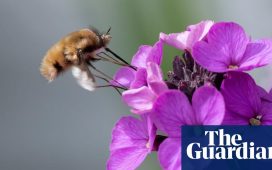As growth makes neighborhoods more crowded for humans, it’s also concentrating carnivores like bobcats and coyotes into the remaining green spaces, leading them to interact with each other more frequently than they do in wild areas, according to research in Raleigh, North Carolina, and Washington, D.C.
The citizen science study looks at how carnivores interact with each other when they’re sharing space in small suburban forest patches. With the help of 557 volunteers and 1,260 remote cameras set up in suburban, exurban, rural and wild areas, the researchers documented 6,413 carnivores among nearly 43,000 images of wildlife. Carnivore species included bobcats and coyotes along with smaller gray and red foxes.
“We found a lot of animal activity in the suburbs, but it was really concentrated in the remaining green space. We think carnivores are trying to avoid people, so they are moving through the strips of remaining forest, where they are more likely to interact with each other,” says lead author Arielle Parsons, researcher with the North Carolina Museum of Natural Sciences and Ph.D. student at North Carolina State University.
“What we discovered was that preserving green space in our cities is important not only for humans but also for wildlife species. Green space provides cover, it provides food and it’s a good way for carnivores to navigate without being in any danger from people.”
In general, the smaller carnivores steer clear of the larger ones. Some have theorized that smaller carnivores might stay closer to people, using them as “human shields” from larger predators. But that wasn’t borne out by the study.
“We found, on the contrary, that gray foxes and coyotes especially — our smallest species and our largest species — actually tended to use the same sites,” Parsons says. “In other words, they didn’t avoid each other, which was pretty surprising.”
For those who are wary about having carnivores in their midst, Parsons says it’s actually a good thing, given the key role they play in the ecosystem.
“Our study is showing that carnivores are trying to stay away from people by using forested areas,” Parsons says. “If we give them the opportunity to do that through preservation of green space and green space corridors through our urban areas, carnivores are going to continue to live nearby, which is actually a good thing for the ecology of our cities.”
“Just like roadways and sidewalks focus human movement and increase the potential for interaction, we find the high use of strips of remaining green space by carnivores increases their level of interaction,” says study co-author Roland Kays, a zoologist with NC State and the N.C. Museum of Natural Sciences. “This shows how urban planning can affect the ecology of animals that share cities with people.”
Story Source:
Materials provided by North Carolina State University. Note: Content may be edited for style and length.













